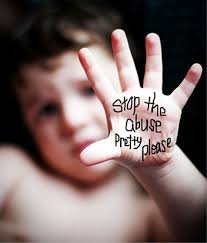Bartered baby syndrome (also known S Caffey syndrome) refers to a clinical condition in young children of usually less than 3 years of age who have received non-accidental violence or injury.
Victim:
It is usually an unwanted child.
Causes:
Battered child syndrome (BCS) is found at every level of society, although the incidence may be higher in lower-income households, where adult caregivers may suffer greater stress and social difficulties and have a greater lack of control over stressful situations.
Other risk factors include
- lack of education,
- single parenthood
- alcoholism or other drug addictions.
The child abuser most often injures a child in the heat of anger or during moments of stress.
- Common trigger events that may occur before assaults include incessant crying or whining of infants or children; perceived excessive “fussiness” of an infant or child; a toddler’s failed toilet training ; and exaggerated perceptions of acts of “disobedience” by a child.
- Sometimes cultural traditions may lead to abuse, including beliefs that a child is property, that parents (especially males) have the right to control their children any way they wish, and that children need to be toughened up to face the hardships of life.
- Child abusers were often abused as children themselves and do not realize that abuse is not an appropriate disciplinary technique.
- Abusers also often have poor impulse control and do not understand the consequences of their actions.
Common injuries:
The common injuries are as follows;
- There are abrasions and bruises on the skull.
- Subdural hemorrhages and fracture of skull may b present.
- There are multiple fractures of long bones and hyoid bone.
- X-ray of whole body reveals multiple fractures in different body areas.
- Injuries on lip,mouth,torn frenulum,and whipping sign.
- Injuries to eyes and even retina.
Management:
- Safety of the child is 1st priority.
- Advise the family not to beat the child.
- Hospitalize the child for better treatment
- Try to know problems of parents and give them proper advise and send the child with them.
- Warning can be given to the parents.






